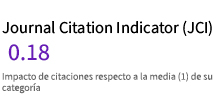Memento Mori: la representación de la muerte en la fotografía de la Guerra Civil española
DOI:
https://doi.org/10.24310/Fotocinema.2016.v0i13.6053Abstract
La historia de España está marcada irremediablemente por la guerra civil. La historia del fotoperiodismo también, porque fue precisamente en la guerra civil cuando se dan las primeras muestras de un Fotoperiodismo de la Modernidad. Cientos de fotografías procedentes de una variada y al tiempo prestigiosa cantera de fotógrafos se apilan en los archivos fotográficos: algunas firmadas, otras no; algunas fotografían personas ilustres, otras sujetos anónimos. Pero quizá las fotografías que menos abundan entre todas estas imágenes que nos recuerdan el pasado con dolor, sean las fotografías que recogen los cuerpos yacentes de niños, mujeres y hombres que murieron durante la guerra.Proponemos a través de la revisión de las fotografías de difuntos y su análisis desde la estética, la retórica y la emoción, iniciar un proceso de “introyeción” de la guerra civil: un proceso por el cual el encuentro con la muerte en la propia imagen, sea el paso decisivo para cicatrizar las heridas de un tiempo que pertenece a nuestro pasado político, económico, social y sobre todo, emocional.
Abstract:
The Spanish civil war has determinated the History of Spain as well as the History of journalism, since it was precisely in the Civil War when the first signs of a modern photojournalism were shown. Hundreds of photos taken by several eminent photographers around the world, are stacked in photographic archives, waiting to be realized. Some of their authors are recognised, some of then not; some of them, portray well-known people, others not. Among all these stacked images, the pictures of dead bodies of children, men and women, who died during the war, are the least frequent. Those that remind us of the past with pain.
Throug reviewing the pictures of deceased and analysing from aesthetics, rhetorics and emotion, the aim of this paper is to begin a process of “introyection” of civil war: a process in which the encounter with death in images itself, allows us to heal the wounds of a time that belongs to our political, economic, social and mainly emotional past.Downloads
Metrics
Downloads
Published
How to Cite
Issue
Section
License
All contents published in Fotocinema Revista científica de cine y fotografía are protected under the Creative Commons Attribution-NonCommercial-ShareAlike 4.0 International (CC BY-NC-SA 4.0) license. All about this license is available in the following link: <http://creativecommons.org/licenses/by-nc-sa/4.0>
Users can copy, use, redistribute, share and exhibit publicly as long as:
- The original source and authorship of the material are cited (Journal, Publisher and URL of the work).
- It is not used for comercial purposes.
- The existence of the license and its especifications are mentioned.
There are two sets of authors’ rights: moral and property rights. Moral rights are perpetual prerogatives, unrenounceable, not-transferable, unalienable, imprescriptible and inembargable. According to authors’ rights legislation, Fotocinema. Revista científica de cine y fotografía recognizes and respects authors moral rights, as well as the ownership of property rights, which will be transferred to University of Malaga in open access. The property rights are referred to the benefits that are gained by the use or the dissemination of works. Fotocinema. Revista científica de cine y fotografía is published in an open access form and it is exclusively licenced by any means for doing or authorising distribution, dissemination, reproduction, , adaptation, translation or arrangement of works.
Authors are responsable for obtaining the necessary permission to use copyrighted images.













13.png)



